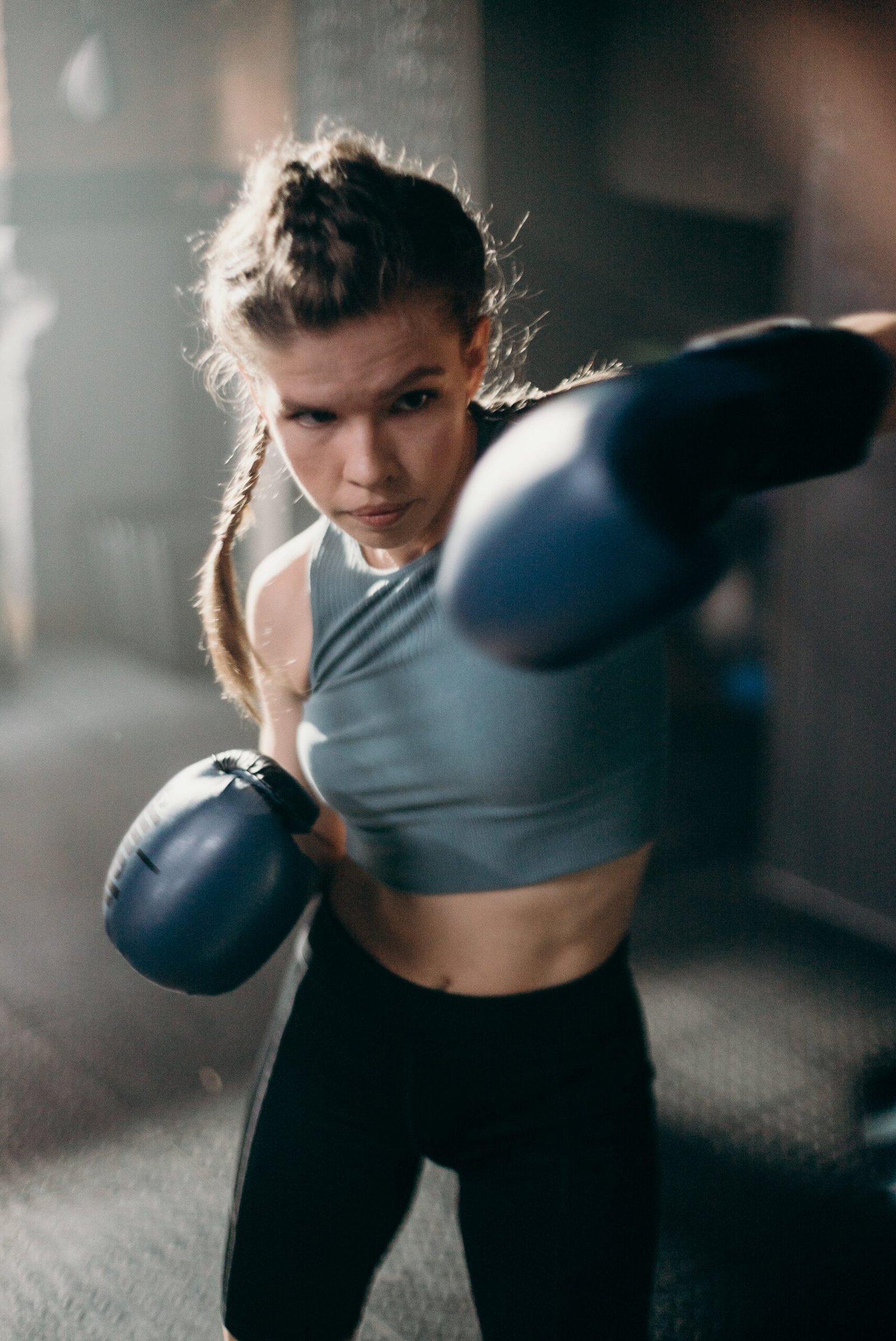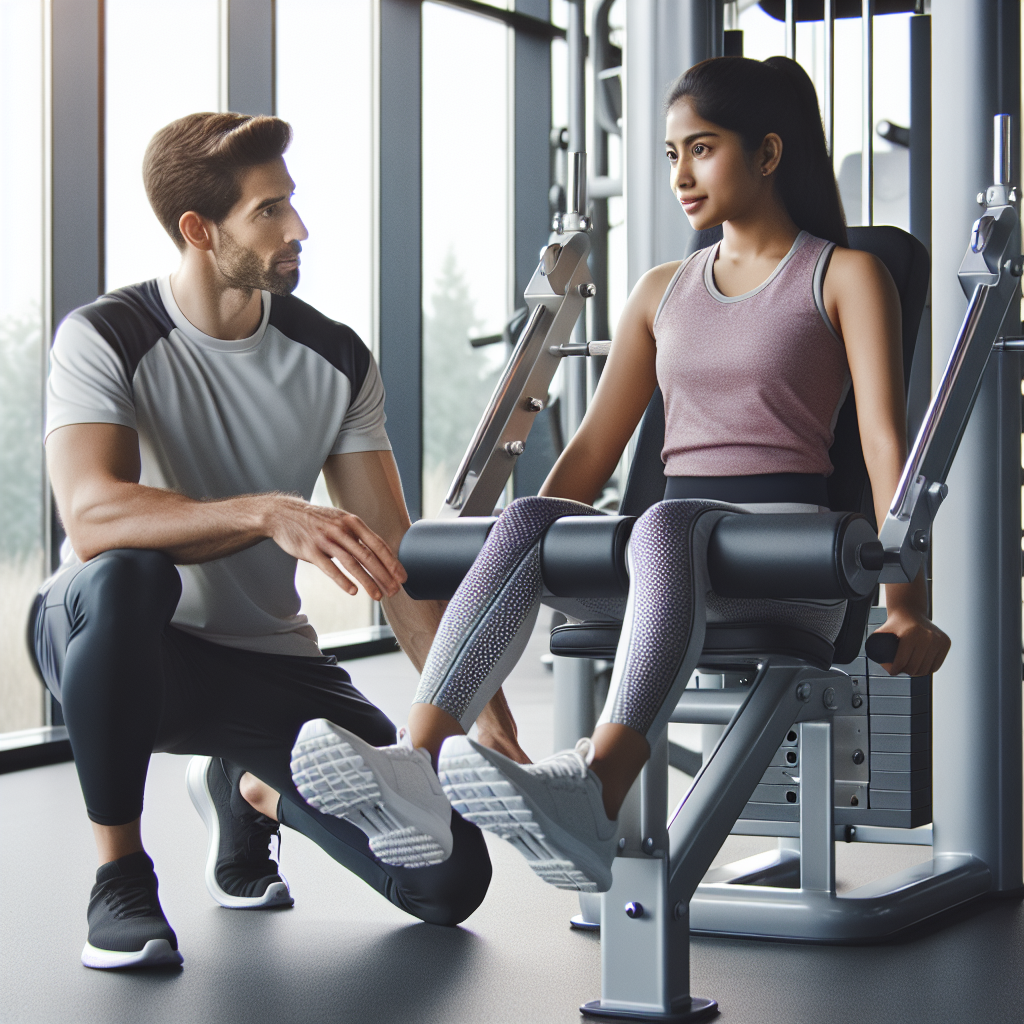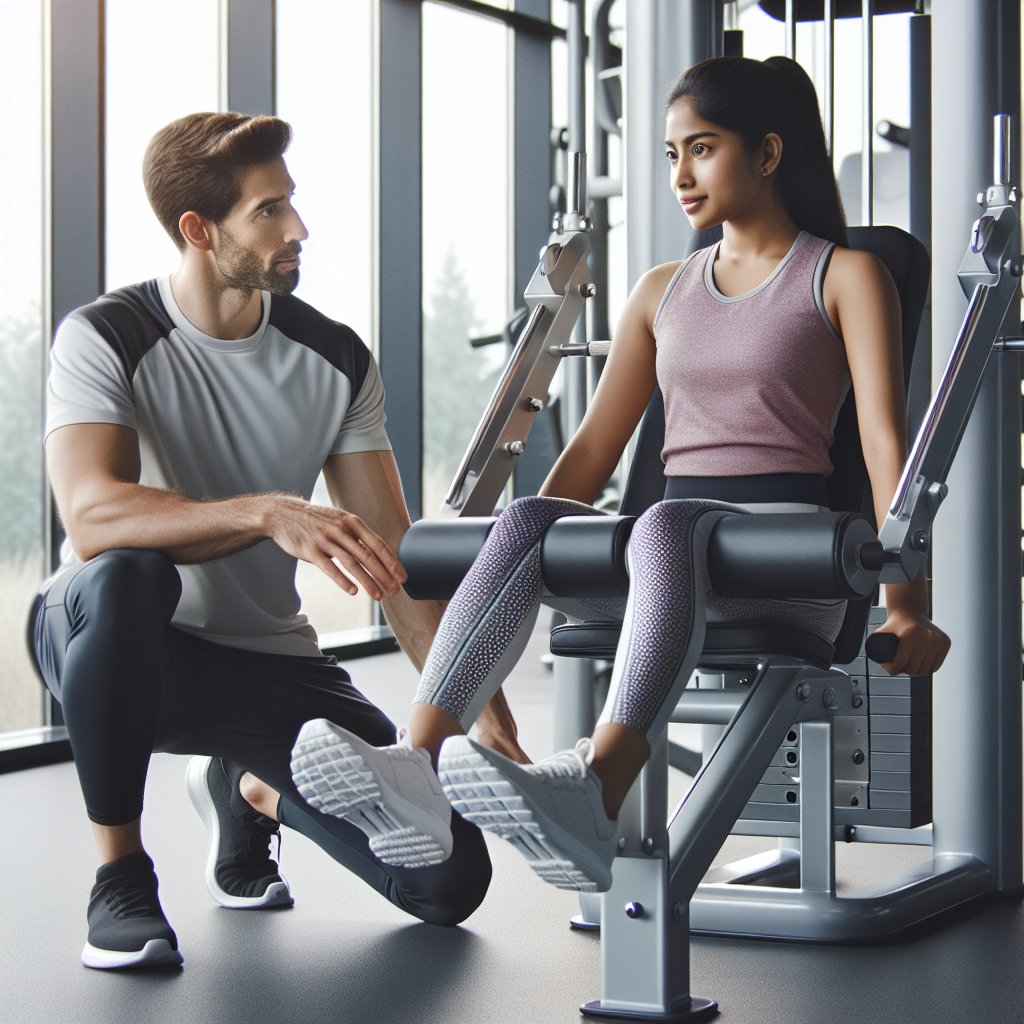The article “Maximizing Leg Strength with the Leg Spreader Machine” explores the benefits and effectiveness of incorporating the leg spreader machine into a workout routine. This article delves into the innovative design of modern gym machines and the unique features that set the leg spreader machine apart from its counterparts. By comparing the costs and summarizing the impact of this particular machine on leg strength, we aim to provide a comprehensive understanding of its potential benefits to fitness enthusiasts.

Introduction
Leg strength is a crucial component of overall fitness and athletic performance. It not only allows us to excel in sports and physical activities but also plays a pivotal role in reducing the risk of injury. To maximize leg strength, incorporating targeted exercises into our training routine is essential. One such exercise machine that can aid in this endeavor is the leg spreader machine. In this article, we will explore the benefits of maximizing leg strength, delve into the functionality and design of the leg spreader machine, discuss proper technique and form, strategies for maximizing leg strength training, safety considerations, common mistakes to avoid, variations and modifications of the exercise, as well as the advantages of using the leg spreader machine over traditional leg exercises.
Benefits of Maximizing Leg Strength
Improved performance in sports and physical activities
One of the primary benefits of maximizing leg strength is the improved performance it brings in various sports and physical activities. Strong leg muscles provide the power and explosiveness needed for activities such as running, jumping, kicking, and lifting. Whether it’s improving our sprint time, enhancing our vertical jump, or performing well in sports like basketball or soccer, maximizing leg strength can significantly boost our athletic prowess.
Reduced risk of injury
Another significant advantage of strong leg muscles is the reduced risk of injury. By strengthening the muscles surrounding the knees, hips, and ankles, we can enhance joint stability and protect against common injuries such as sprains, strains, and tears. Strong legs also provide better shock absorption, reducing the impact of repetitive movements and minimizing the stress on our joints, tendons, and ligaments during physical activities.
Increased balance and stability
Leg strength is vital for maintaining balance and stability, especially during activities that require single-leg support or when navigating uneven terrains. By improving the strength of the muscles in our legs, we enhance our ability to balance and stabilize, reducing the likelihood of falls, slips, and other accidents.
Enhanced overall lower body strength
Maximizing leg strength also contributes to overall lower body strength. Our legs comprise several large muscle groups, including the quadriceps, hamstrings, glutes, and calves. Strengthening these muscles not only improves our leg strength but also enhances our overall lower body strength, allowing us to perform tasks such as squatting, lunging, and lifting with greater ease and efficiency.

Understanding the Leg Spreader Machine
Overview of the leg spreader machine
The leg spreader machine, also known as the leg press machine, is a popular piece of equipment found in many gyms and fitness centers. It consists of a seat positioned on a sled or platform and a system of weights or resistance bands that allow for adjustable resistance. The machine is designed to target the muscles of the lower body, primarily the quadriceps, hamstrings, glutes, and calves.
Functionality and design
The leg spreader machine functions by simulating the movement of a leg press or leg spread. The user sits on the seat with their feet on the foot platform, then pushes against the resistance to extend their legs, working the targeted muscles. The machine typically allows for a range of motion that closely resembles the natural movement of the legs, ensuring optimal muscle activation and engagement.
Targeted leg muscles
The leg spreader machine primarily targets the quadriceps muscles, located at the front of the thigh. These muscles are responsible for extending the knee joint. Additionally, the hamstrings, located at the back of the thigh, are also engaged during the exercise, as they act as stabilizers. The glutes, located in the buttocks, and the calves also contribute to the movement, providing additional support and strength.
Proper Technique and Form
Setting up the machine
Before starting a leg spreader machine workout, it is crucial to set up the machine correctly. First, adjust the seat height so that your feet comfortably rest on the foot platform. Ensure that your hips are in line with your knees when seated, maintaining a proper 90-degree angle at the knees to minimize strain.
Adjusting the resistance
The leg spreader machine offers adjustable resistance to cater to various fitness levels. Begin with a lower resistance setting and gradually increase the weight or tension as your strength improves. It’s important to find a balance between challenging yourself and maintaining proper form throughout the exercise.
Correct body positioning
Maintaining correct body positioning is essential to ensure maximum effectiveness and safety of the leg spreader exercise. Sit back firmly in the seat, maintaining contact between your lower back and the backrest. Keep your chest up and your shoulders relaxed, avoiding any unnecessary tension. It is also crucial to maintain a neutral spine position throughout the exercise, avoiding excessive rounding or arching of the back.
Engaging the targeted muscles
To maximize the benefits of the leg spreader exercise, focus on engaging the targeted muscles throughout the movement. As you push against the resistance, imagine driving through your heels and contracting your quadriceps and glutes. Ensure that you are not relying solely on momentum or other muscles to perform the exercise, but rather concentrating on the specific muscles you intend to target.
Breathing techniques
Proper breathing techniques are important during any exercise to ensure the delivery of oxygen to the muscles and maintain stability. When performing the leg spreader exercise, exhale as you push against the resistance and inhale as you return to the starting position. This rhythm of breathing helps to maintain control and stability throughout the movement.

Maximizing Leg Strength Training
Setting goals and tracking progress
To maximize leg strength, it is essential to set specific goals and track your progress over time. Whether your aim is to increase the weight lifted, improve the number of repetitions, or enhance the overall strength of your legs, establishing clear goals can provide motivation and direction. Regularly track your progress by keeping a workout journal or using a fitness app to monitor your leg strength gains.
Creating a leg strength training program
To effectively maximize leg strength, it is recommended to create a structured leg strength training program. This program should include a variety of exercises that target different muscle groups in the legs, including the quadriceps, hamstrings, glutes, and calves. Incorporate exercises such as squats, lunges, step-ups, and of course, the leg spreader machine. Aim for a balanced approach that includes both compound exercises (involving multiple muscle groups) and isolation exercises (targeting specific muscles) to ensure overall leg strength development.
Recommended frequency and duration
The frequency and duration of leg strength training should be tailored to individual fitness levels and goals. As a general guideline, aim for two to three leg strength training sessions per week, allowing for at least one day of rest between sessions to allow for muscle recovery. Each session should last approximately 45 minutes to an hour, including warm-up and cool-down periods.
Incorporating variations and progressive overload
To continue making progress and maximizing leg strength, it is important to incorporate variations and progressive overload into your training routine. This can include altering the foot position on the leg spreader machine, changing the tempo of the movement, or increasing the resistance. Gradually and progressively overload the muscles by gradually increasing the weights or resistance used, challenging your muscles to adapt and grow stronger over time.
Balancing leg exercises in a full-body routine
While leg strength is important, it is vital to maintain a balanced approach to full-body training. Incorporate exercises that target other muscle groups, such as the upper body and core, to ensure overall strength development and prevent muscular imbalances. A well-rounded full-body routine that incorporates leg exercises, along with exercises for other muscle groups, will contribute to overall fitness and functional strength.
Safety Considerations
Warm-up and stretching
Before engaging in any leg strength training, it is crucial to warm up properly to increase blood flow to the muscles and prepare them for exercise. A warm-up can include light cardiovascular activity such as jogging or cycling, followed by dynamic stretches that target the muscles of the legs. Dynamic stretches involve moving the muscles through their full range of motion without holding the stretch for an extended period.
Choosing appropriate resistance
As mentioned earlier, appropriate resistance is key to ensuring safety and effectiveness during leg spreader machine exercises. Choose a resistance level that allows for proper technique and full range of motion without compromising form. Starting with a lower resistance and gradually increasing it as your strength improves is a sensible approach.
Maintaining proper posture
Maintaining proper posture throughout leg spreader exercises is crucial for safety and optimal muscle engagement. Avoid rounding or arching the back, and keep the chest lifted and the shoulders relaxed. Focus on keeping the core engaged to provide stability and protect the spine. It may be helpful to consult a fitness professional to ensure proper form and posture during the exercise.
Avoiding overtraining and fatigue
While it is important to challenge yourself during leg strength training, be mindful of not overtraining or pushing yourself to the point of exhaustion. Overtraining can lead to decreased performance, increased risk of injury, and burnout. Allow for adequate rest and recovery between training sessions, listen to your body, and modify your training intensity if needed.
Listening to your body’s signals
When engaging in leg strength training or any physical activity, it is crucial to listen to your body’s signals. Pay attention to any pain, discomfort, or unusual sensations during exercises. If you experience significant pain or discomfort, stop the exercise and consult with a healthcare professional or fitness expert. Your body knows its limits, and pushing beyond them can lead to injury.

Common Mistakes to Avoid
Using excessive momentum
One common mistake when using the leg spreader machine is relying on excessive momentum to complete the movement. This reduces the effectiveness of the exercise and increases the risk of injury. Focus on controlled movements and avoid using momentum to ensure proper muscle engagement.
Neglecting muscle activation
Proper muscle activation is essential to maximize the benefits of leg spreader exercises. Neglecting to engage the targeted muscles and relying on other muscles to perform the exercise not only decreases the effectiveness but also increases the risk of muscle imbalances. Concentrate on contracting the quadriceps, hamstrings, glutes, and calves throughout the movement.
Incomplete range of motion
Performing leg spreader exercises with incomplete range of motion can limit the effectiveness of the exercise and hinder leg strength development. Aim to fully extend your legs and flex your knees, ensuring a complete range of motion. However, be mindful of not overextending or hyperextending the joints.
Improper foot placement
Improper foot placement on the foot platform of the leg spreader machine can lead to unnatural movement patterns and reduce muscle engagement. Ensure that your feet are positioned shoulder-width apart and aligned with your knees and hips. Maintain a neutral foot position, avoiding excessive inward or outward rotation.
Inadequate resistance
Using inadequate resistance on the leg spreader machine can limit the strength-building benefits of the exercise. Ensure that the resistance is challenging enough to require effort but still allows for proper form and technique. Gradually increase the resistance over time to continue progressing and maximizing leg strength.
Variations and Modifications
Single-leg leg spreader exercises
To further challenge and target specific muscle groups, single-leg leg spreader exercises can be incorporated. This variation requires performing the leg spreader exercise with one leg at a time, allowing for increased focus on each leg individually. Single-leg exercises help to address any muscle imbalances and enhance stability and control.
Adding resistance bands
Resistance bands can be used in conjunction with the leg spreader machine to increase the overall resistance and target different muscle fibers. Simply attach the resistance band to the machine and loop it around your legs or feet, depending on the desired muscle activation. This modification adds an element of progressive overload and can further enhance leg strength development.
Using different foot positions
Changing the foot position on the foot platform of the leg spreader machine can target different muscle groups within the legs. Placing your feet higher on the platform places greater emphasis on the glutes and hamstrings, while positioning your feet lower targets the quadriceps. Experiment with different foot placements to vary the muscle activation and incorporate a comprehensive leg workout.
Incorporating isometric contractions
Isometric contractions involve holding the muscles in a static position without actually moving the joint. Incorporating isometric contractions into leg spreader exercises can add a challenging aspect to the workout. For example, when your legs are fully extended against the resistance, hold the position for a few seconds before returning to the starting position. This helps to build strength and endurance in the targeted muscles.
Combining the leg spreader with other exercises
To further enhance leg strength and overall fitness, the leg spreader machine can be combined with other exercises. Pairing leg spreader exercises with exercises such as lunges, squats, or deadlifts provides a more comprehensive leg workout, engaging different muscle groups and promoting functional strength development.

Benefits of Leg Spreader Machine over Traditional Exercises
Isolation of targeted leg muscles
One of the key advantages of the leg spreader machine is its ability to isolate and target specific leg muscles. Unlike compound exercises like squats or lunges, which work multiple muscle groups simultaneously, the leg spreader machine allows for precise targeting of the quadriceps, hamstrings, glutes, and calves. This isolation enables focused muscle activation and growth.
Reduced strain on joints and tendons
Traditional leg exercises such as squats or lunges can place significant strain on the joints and tendons, particularly for individuals with existing joint issues or injuries. The leg spreader machine, with its guided movement and controlled resistance, minimizes stress on the joints and tendons, making it a safer option for individuals with joint concerns or those recovering from injuries.
Adjustable resistance for progressive training
Unlike traditional leg exercises that rely on body weight or free weights, the leg spreader machine offers the advantage of adjustable resistance. This allows for progressive training, where the resistance can be increased gradually over time as strength improves. The ability to adjust the resistance ensures that the muscles are consistently challenged and prevents plateauing.
Enhanced stability and balance training
The leg spreader machine not only strengthens the leg muscles but also enhances stability and balance. The guided movement and support provided by the machine allow individuals to focus on their form and balance without the risk of toppling over or losing stability. This aspect is particularly beneficial for individuals who are working on rehabilitating injuries or improving overall balance.
Conclusion
Maximizing leg strength is crucial for overall physical performance, reducing the risk of injury, and enhancing daily activities. The leg spreader machine provides an effective tool for strengthening the leg muscles, especially the quadriceps, hamstrings, glutes, and calves. By understanding its functionality and proper technique, incorporating the leg spreader machine into a comprehensive leg strength training program, and avoiding common mistakes, individuals can reap the benefits of enhanced leg strength, improved performance, reduced injury risk, and increased stability and balance. By utilizing variations and modifications, maximizing leg strength can be customized to individual needs and goals. Whether in comparison to traditional leg exercises or as a standalone training tool, the leg spreader machine offers unique advantages that can help individuals reach their leg strength goals while ensuring safety and efficiency.


